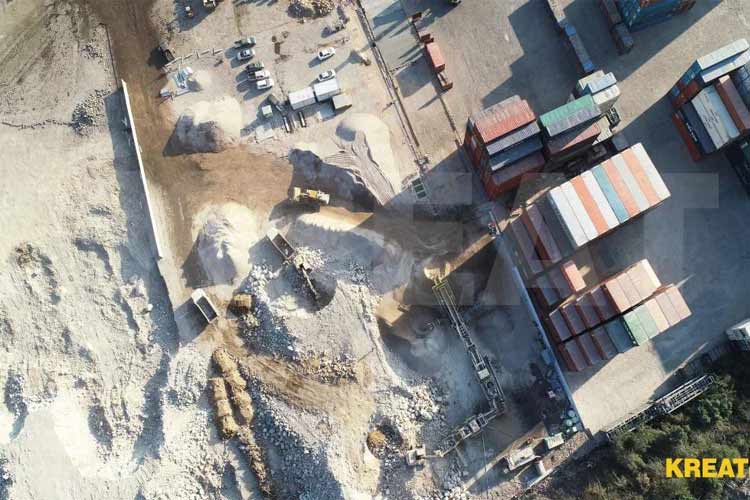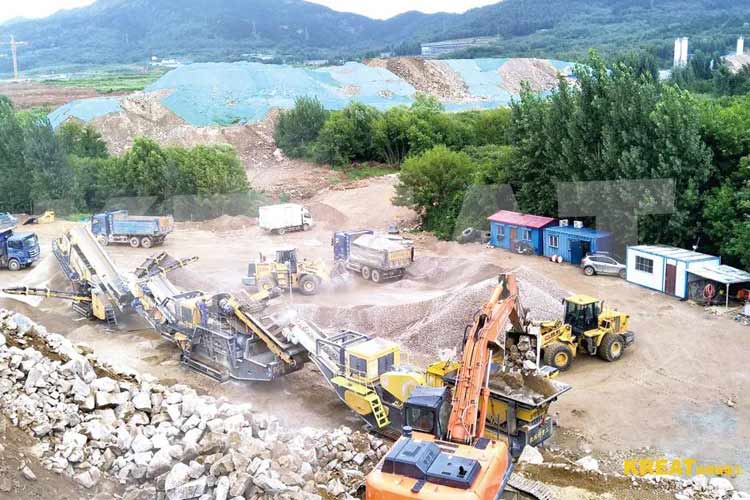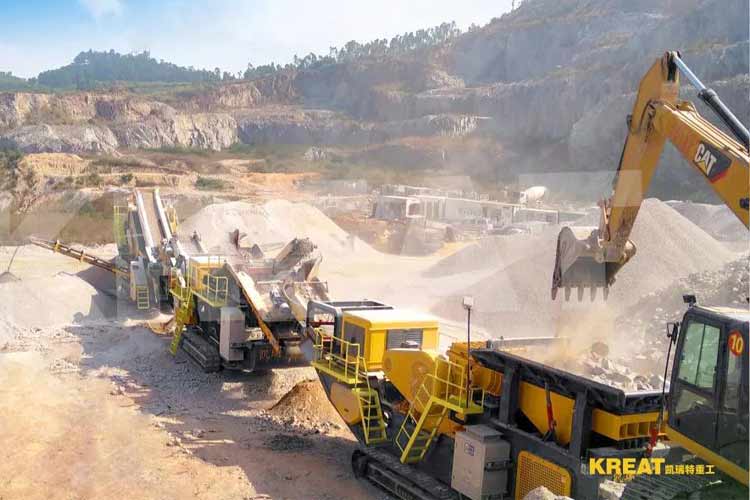

Company News 2023-06-13
The mobile cone crushing station has a high crushing ratio, high efficiency, low energy consumption, and uniform product particle size. It is suitable for medium and fine crushing of various ores and rocks, and is widely used in industries such as metallurgy, construction, road construction, chemistry, and silicate. If there are temporary issues with the equipment that cannot be resolved as soon as possible, it will directly affect production efficiency. So, what are the possible problems that may occur during the construction operation of cone breaking?

01. Stuck
Cone breakage and jamming are often caused by sudden equipment failures. When cone breakage and jamming occur, it can affect the normal progress of construction operations, and in severe cases, it can also reduce the service life of the equipment and its components. What are the types of broken and stuck cones?
(1) Stuck material
Excessive feeding of cone breakage or improper feeding properties (such as iron containing materials) may cause cone breakage and blockage, and even result in cone breakage and jamming, forcing the machine to shut down.
⑵ The spindle is broken and stuck
Improper use of the cone breaker is one of the main reasons for spindle fracture. When the discharge port is constantly tightened or non crushable materials enter the cone breaker crushing chamber to achieve the required discharge fineness, it produces a strong impact on the spindle, causing the cone breaker spindle to break and get stuck.
On the other hand, although the cone breaker has an overload protection device, when the cone breaker is in an overloaded working state for a long time, the overload protection device cannot completely avoid the damage caused by overloaded construction operations on the cone breaker. At this time, the main shaft is prone to fracture, leading to equipment jamming.
⑶ The moving cone and adjusting sleeve are stuck
① When the cone is running under load, due to the loss of pressure in the hydraulic station, the locking fails, and the adjustment sleeve will rotate with the moving cone. If the operator does not detect and handle it in a timely manner, it will cause the adjustment sleeve to get stuck, leading to the cone breaking and shutdown.
② The reasons for the adjustment sleeve being stuck may also be poor thread lubrication, worn adjustment cap seals or dust cover seals, scratches on the adjustment sleeve and support sleeve threads, or prolonged overload work due to cone breakage.
02. Liner wear
The lining plate is an important component of conical fracture and also the main wear-resistant component of conical fracture. How to reduce lining wear during cone breaking construction?

(1) Reduce the looseness of the lining plate
Loose lining plates can cause relative movement between the lining plate and the conical body, exacerbating wear. Therefore, a soft metal gasket can be placed between the lining plate and the cone, and fastened with bolts to ensure that the two are flush and reduce the phenomenon of breakage or wear caused by the loosening of the lining plate.
⑵ Improve the stress state of the lining plate
In order to ensure uniform stress at all points of the lining plate, plastic deposits such as lead plate, aluminum plate, zinc alloy plate, low-carbon steel plate, or pouring cement mortar are often placed between the lining plate and the cone to ensure a close connection between the lining plate and the cone.
⑶ Control the feed particle size
During the operation of the cone crusher, it should be noted that the materials put into the equipment must meet the crushing requirements. It is strictly prohibited to have excessive hardness, high moisture, or other non crushing materials enter the crushing chamber, otherwise it will cause problems such as cone breakage, jamming, and severe wear of the lining plate.
(4) Uniform feeding
If the feeding amount of the moving conical crushing station is not adjusted in a timely manner, it will cause the crushed material to directly rub and collide with the lining plate, exacerbating the wear and tear of the lining plate. Therefore, it is necessary to ensure that the crushed materials enter the crushing chamber evenly and continuously.
(5) Prohibit equipment from operating under overload
If the cone is overloaded for a long time, it will cause the lining plate to be overloaded for a long time. Therefore, it is necessary to avoid prolonged overloading of the equipment. The fatigue wear of the lining plate can be reduced by reducing the surface stress of the lining plate, selecting appropriate fit gaps, etc.
(6) Prevent excessive temperature rise of equipment
If the working temperature of the cone is high, it is easy to cause plastic deformation of the lining plate under the impact and grinding of the material. Therefore, equipment lubrication should be done well to reduce the phenomenon of excessive temperature rise and reduce the plastic deformation of the lining plate.
03. Oil leakage
The cone breaking oil leakage will directly affect the lubrication condition of the equipment, leading to equipment failure due to poor lubrication. To prevent equipment oil leakage during production, the following measures can be taken:

(1) Ensure that the equipment is well sealed
The quality of sealing structure design is related to the sealing effect and the lifespan of the sealing ring. The sealing effect of the O-ring depends on the correctness of the installation groove size. The installation groove of the sealing ring is too deep, and the compression amount of the sealing ring is not enough to play a sealing role. Therefore, the sealing structure should be reasonably designed and processed to ensure good sealing performance of the sealing device.
Install the sealing ring correctly to ensure good sealing of the equipment. Do not use angled tools to install the sealing ring to prevent scratching and stretching it to a permanently deformed position. Suitable lubricating oil can be applied to the sealing ring for installation purposes.
⑵ Inspection during production
① Regularly check whether the filter is blocked or damaged;
② Replace the twisted oil discharge pipeline to ensure the smoothness of the return pipeline;
③ Pay attention to regularly cleaning the ventilation cover on the side of the cone broken transmission shaft frame, and use compressed air to blow the long core hole connecting the ventilation cover on the transmission shaft frame.
④ Check whether the gap between the inner wall of the main engine oil pool and the oil retaining ring on the counterweight block is reasonable, to prevent the lubricating oil splashing between each other from forming oil seals, which can cause the cone to break and leak oil.
04. Seal failure
Due to the generation of dust during the cone breaking process, corresponding sealing devices are generally required, but sealing failure may occur during construction operations. So what are the reasons for seal failure?

⑴ Force deformation
When the cone breaks through the crushing wall and the rolling mortar wall to break the material, the strong crushing force causes the body to tilt or vibrate, and the sealing element is easily deformed from the original movement trajectory, causing the original sealing state to change and causing the equipment seal to fail.
Improper installation
During the installation, maintenance, and replacement of the sealing element due to cone breakage, due to incorrect installation, local deformation of the sealing element occurred, resulting in equipment sealing failure.
⑶ Poor lubrication
Metal particles and crushed material dust are easily mixed into the friction area, or the lubricating oil deteriorates and the fluidity deteriorates due to long-term construction in a high-temperature environment, which increases the local resistance of the sealing element and leads to deformation.
05. Construction Case of Mobile Cone Crushing Station




